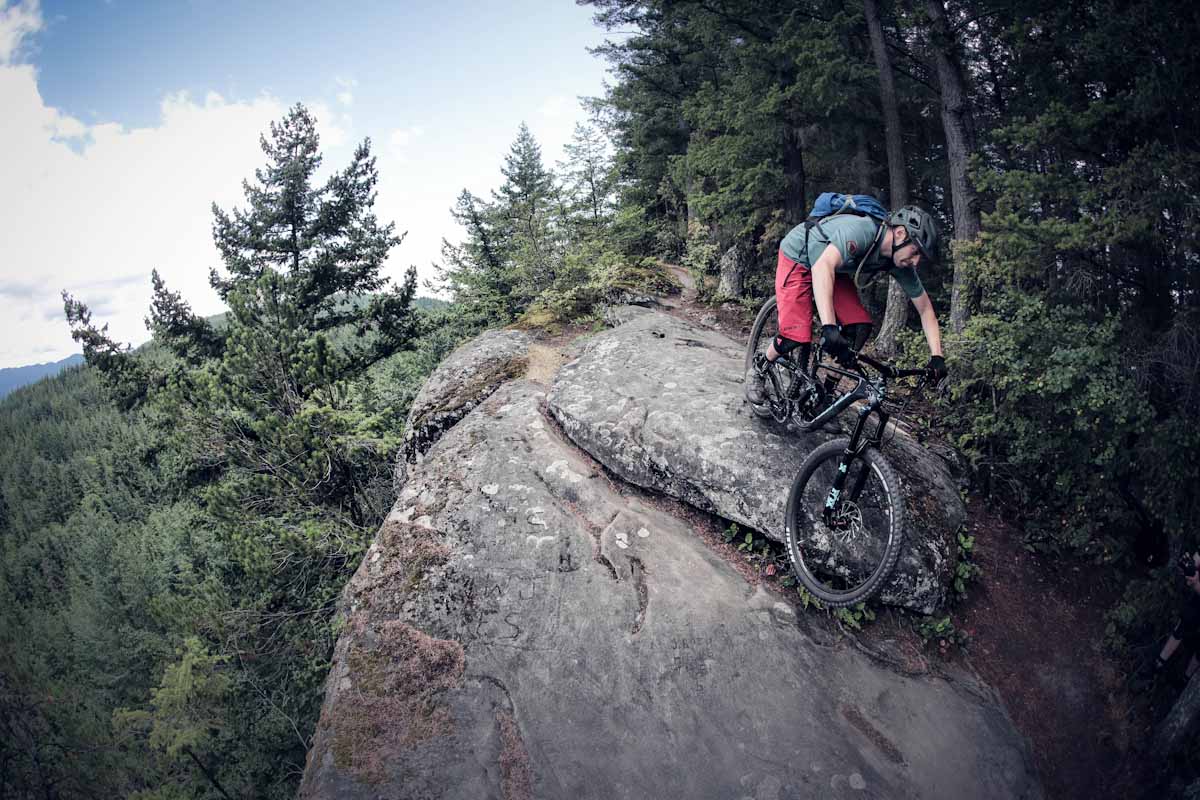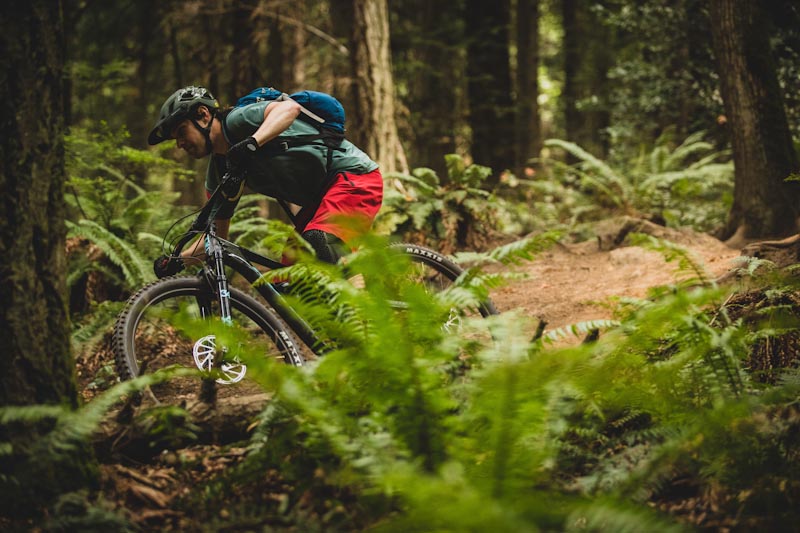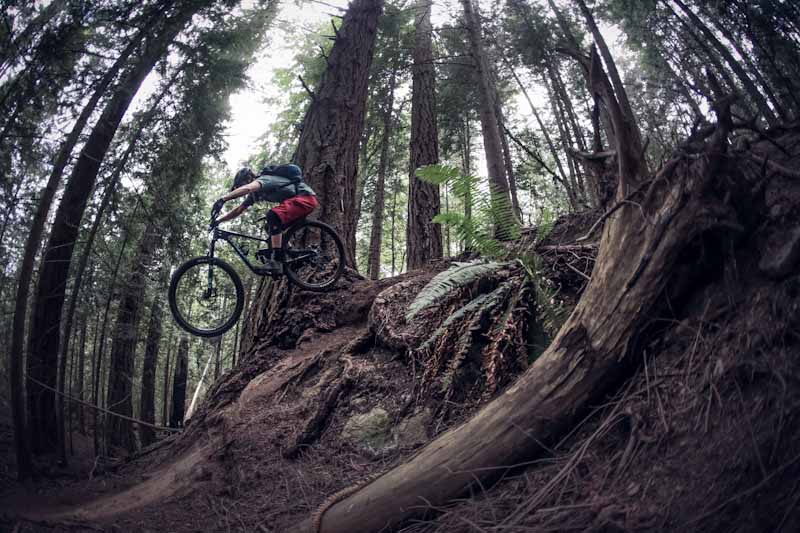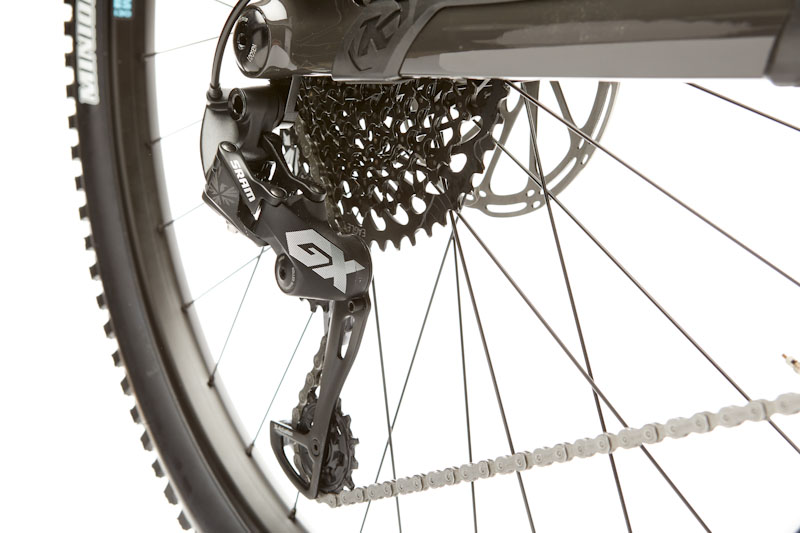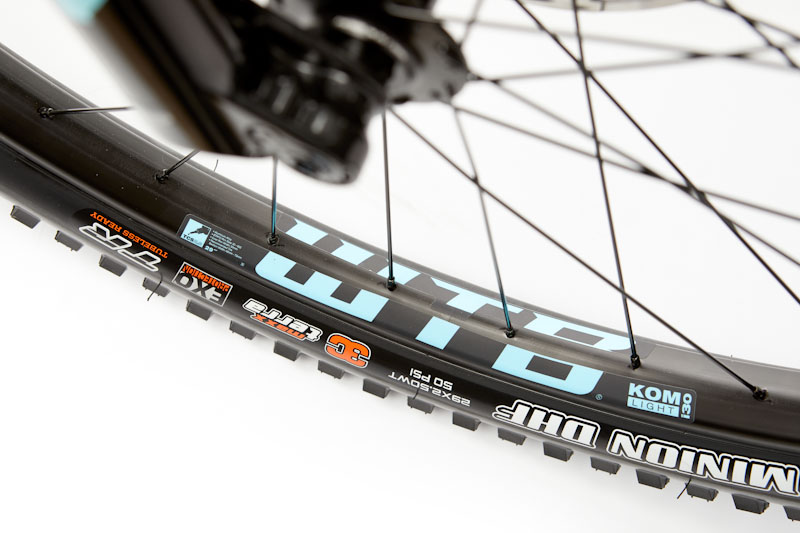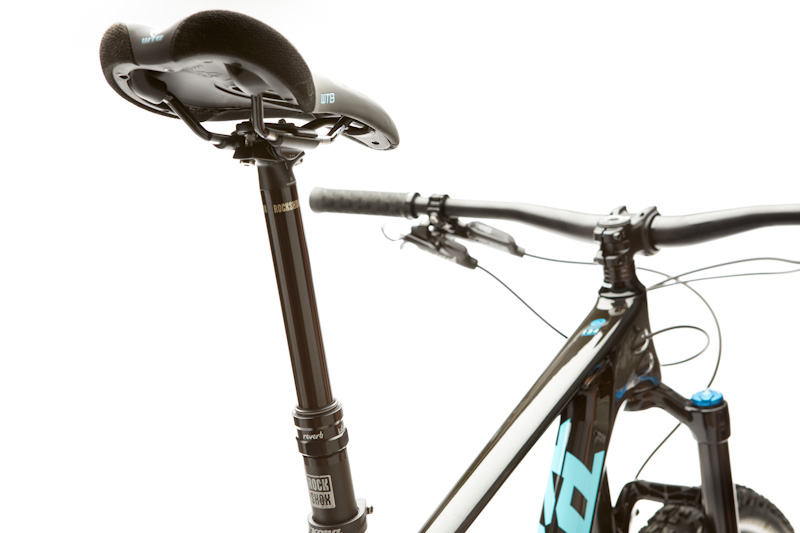As the swiss army knife of MTB’s, a good all-around trail bike has to do several things well. With their redesigned 2020 Process 134s, Kona has crafted a finely balanced bike that can capably conquer a wide range of terrain. Bikerumor got the invite to join Kona USA in Bellingham, Washington for their 2020 launch event, where I took the new Process 134 CR 29 out for a few rides on the area’s awesome trails.
The 134 CR 29 proved itself to be a serious contender in the trail category. Its 140/134mm of travel, 29” wheels and modern frame geometry strike a middle ground that lends the bike a lot of versatility. We got to ride a bunch of different trails, so read on to learn how the Process 134 handled the roots, rocks, and high-speed flow lines.
2020 Kona Process 134 CR 29 Ride Impressions:
 On our first demo day the media crew was treated to a nice mix of terrain; our first loop was up a smooth forest road climb to a trail that switched between flowy, buff sections and technical root and rock. The second loop was on a cross-country style trail with uphill and downhill sections, and plenty of tight technical corners. This loop also offered some rough rocky terrain and a bunch of gnarly root beds.
On our first demo day the media crew was treated to a nice mix of terrain; our first loop was up a smooth forest road climb to a trail that switched between flowy, buff sections and technical root and rock. The second loop was on a cross-country style trail with uphill and downhill sections, and plenty of tight technical corners. This loop also offered some rough rocky terrain and a bunch of gnarly root beds.
On day two we climbed a mix of road and singletrack, which had both smooth hardpacked sections and some technical rooty bits. We then descended some trails that were definitely rougher than day one, with plenty of roots, rocks and even some nasty brake bumps. The day finished on a high-speed trail that was a perfect blend of flowy yet naturally bumpy. This trail had a bunch of jumps and smaller side hits too, so I got to throw just about everything at the Process 134.
Frame Geo/Fit:
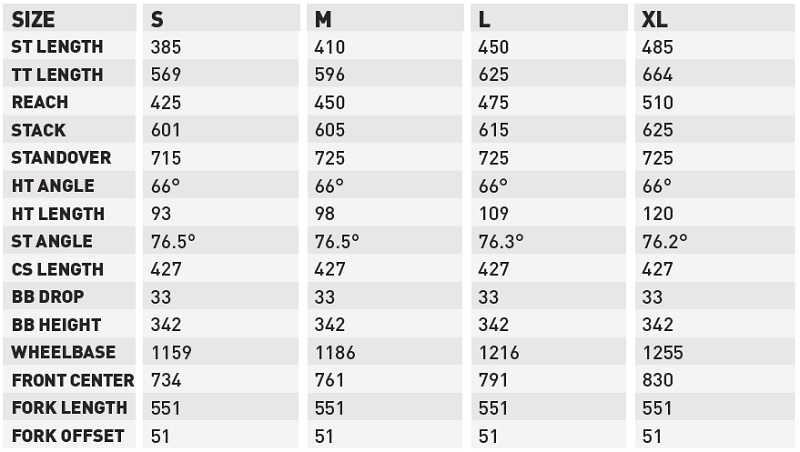 The Process 134 CR 29’s frame geometry lines up with today’s norms for an all-around trail bike. The medium frame’s 450mm reach is comfortable for me, and combined with the steep 76.5 degree effective seat angle it accomplishes what modern MTB geo does best – Offers a well-balanced ride that keeps your weight centered while maintaining an aggressive seated pedalling position.
The Process 134 CR 29’s frame geometry lines up with today’s norms for an all-around trail bike. The medium frame’s 450mm reach is comfortable for me, and combined with the steep 76.5 degree effective seat angle it accomplishes what modern MTB geo does best – Offers a well-balanced ride that keeps your weight centered while maintaining an aggressive seated pedalling position.
I rode with several spacers under my stem, which I found comfortable. Kona emphasized that the stack height was kept lower on the 134’s vs. the Process 153’s, so XC-style riders can set it up in an aggressive, low stance.
The Process 134 has a 66 degree head tube angle, which is perfect for a do-anything 29er. After playing with different forks, Kona’s engineers decided a longer 51mm offset was most suitable for this bike. Out back the Process’ chainstays are very short at 427mm. Manualling through whoops was easy and fun, and cornering was very agile.
With a 33mm BB drop (342mm BB height) the bike has a stable feel at speed, but it is low enough that you have to watch your pedals on technical climbs. I’d say the Process is pretty comparable to most current bikes this way… it seems everyone is looking for that ‘low but not too low’ sweet spot.
Kona says despite looking much leaner, the 2020 Process CR 29’s front end is at least as stiff as the previous version. They did concede that the rear end is actually a bit less stiff due to the new carbon chainstay, but I didn’t find the bike flexy in any way. The Process never felt soft as I pumped hard over rollers and pushed it into the corners, and it plowed straight through rougher patches quite easily. I am a lightweight rider at 145lbs, but I love riding as hard as possible on rough trails!
Suspension:
 Our first ride’s climb was up a smooth forest road, so I rode with the Fox DPX2 Performance Elite rear shock in Firm mode. Along the way the shock used about 50% of its travel, and the bike climbed very strongly with minimal bob and solid power transfer to the pedals. I’ve now ridden DPX2’s on several bikes, and I find their Firm mode provides a stiff pedalling platform yet still allows the rear wheel to absorb trail inputs very smoothly.
Our first ride’s climb was up a smooth forest road, so I rode with the Fox DPX2 Performance Elite rear shock in Firm mode. Along the way the shock used about 50% of its travel, and the bike climbed very strongly with minimal bob and solid power transfer to the pedals. I’ve now ridden DPX2’s on several bikes, and I find their Firm mode provides a stiff pedalling platform yet still allows the rear wheel to absorb trail inputs very smoothly.
On day two, I climbed with the shock in both Open and Climb mode. I was impressed to see with the shock wide open the rear end used only a few mm’s more travel than it did with the shock firmed up – to me this indicates the linkage is doing its job well, without needing help from the shock to improve pedalling efficiency or keep you riding high in the bike’s travel. Riding in Climb or Open does make for a softer ride over bumpy terrain, with hardly any sacrifice in pedaling efficiency.
Kona mentioned how they wanted this bike to offer good mid-stroke support, and I’d say they absolutely nailed it. As mentioned above the bike doesn’t wallow while climbing, and when descending smoother terrain it pumps very well over whoops and rollers. The Process 134 has a lively ride that easily pops off jumps, and it rockets out of corners when you come out cranking. More than any other bike I’ve ridden, the Process demonstrated to me how solid mid-stroke support is a characteristic I like in an all-purpose trail bike.
When faced with a big impact the rear end becomes soft and takes hits like a champ, especially landings from jumps or drops. The linkage is progressive enough that it hit about 90% of its travel on most impacts, but it doesn’t ramp up so sharply that I couldn’t get full travel. One medium-sized drop we hit was enough for me to bottom the Process out front and rear. Only on Day two’s fast, rough trails did I find a few sharp, high-speed impacts got through the linkage and made themselves known with a bit of a clunk.
The Process 134 CR 29 I rode weighs in at 31.14lbs (with tubes, without pedals).
Components:
The Process 134 CR 29 is the lower-spec version of the two carbon models. Up front it runs a Boost-spaced 140mm travel Fox Float 34 Performance fork. I’d bet most riders buying a mid-spec bike would be happy enough with this fork, but Kona was quick to point out that it’s easy to upgrade it with a higher-end damper.
SRAM’s GX shifter and derailleur did their job just fine, with no performance issues whatsoever. Saving a bit of cost on the NX crank makes sense, as there’s no difference in feel between that and a higher-end model (you’ll just shave some weight). The second-generation Guide R brakes only pumped up a bit once on our second descent on day one, but otherwise provided ample power and remained consistent. The 200mm front and 180mm rear rotors also help ensure good braking power.
The Process 134 CR 29 rolls on WTB KOM Light i30 TCS rims laced to DT Swiss 370 hubs. Kona didn’t skimp on the tires, sticking with tried and true Maxxis Minion DHF EXO TR 3C treads. Up front is a 2.5” and in the rear is a 2.3”, and Kona said they stuck with two front tires because this setup rolls faster than the DHF/DHR combo.
The new 150mm Reverb dropper posts require very little force to drop the seat. There is a noticeable difference versus previous models, and the new ones are a breeze to drop. Kudos to Kona for stocking a 150mm in their medium frames. I found the stock WTB Volt Pro saddle pretty comfortable too.
Kona supplies their own cockpit components, but you’ll have to add a pair of pedals. We got to ride their Wah Wah II’s, and they’re a great set of flats with a large, square body and plenty of grip.
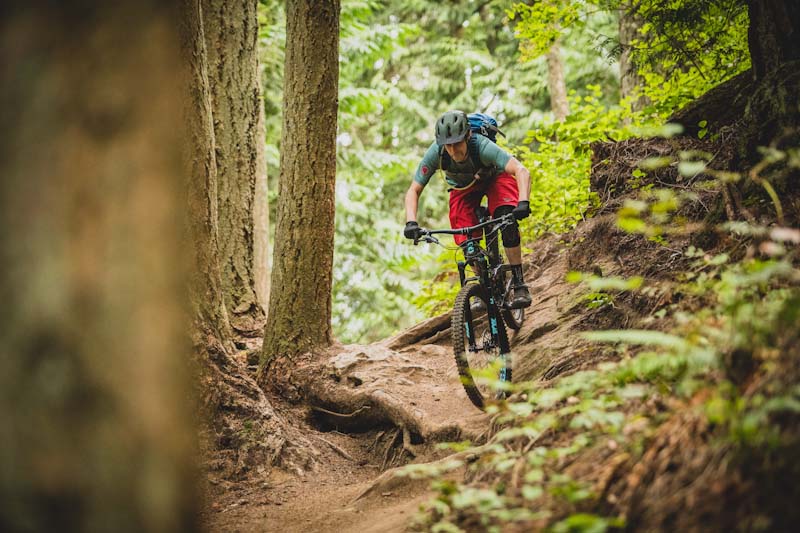
To sum it up, I found the Process 134 CR 29 to be a great all-around trail bike that I’d happily recommend to anyone browsing for a do-it-all MTB. The geometry is current and comfortable, pedalling was great regardless of the rear shock mode, and the linkage makes for a bike with a lively, supportive ride that will dive deep when you thump it hard.
The 2020 Process 134 CR 29 sells for $4,999 in Gloss Lead Powder/Black. Frame sizes range from S-XL.
